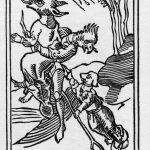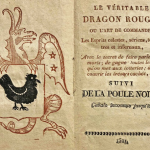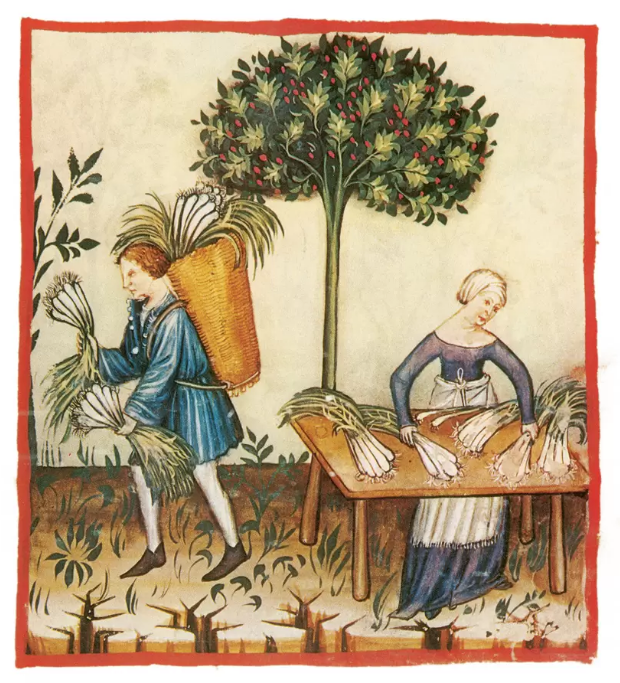
Herbs have been a part of magick and spellcrafting from the beginning of time, and with good reason.
Herbs by definition are plants that have special properties – usually medicinal or culinary – but they also an essential part of magic.
During the witch hunt era, the Church included in its definition of witchcraft anyone with knowledge of herbs for “those who used herbs for cures did so only through a pact with the Devil, either explicit or implicit.” Medicine had long been associated with herbs and magic.
The Greek and Latin words for medicine, “pharmakeia” and “veneficium,” meant both “magic” and “drugs.” Mere possession of herbal oils or ointments became grounds for accusation of witchcraft.
Here is a short list of the most potent herbs.
Belladona
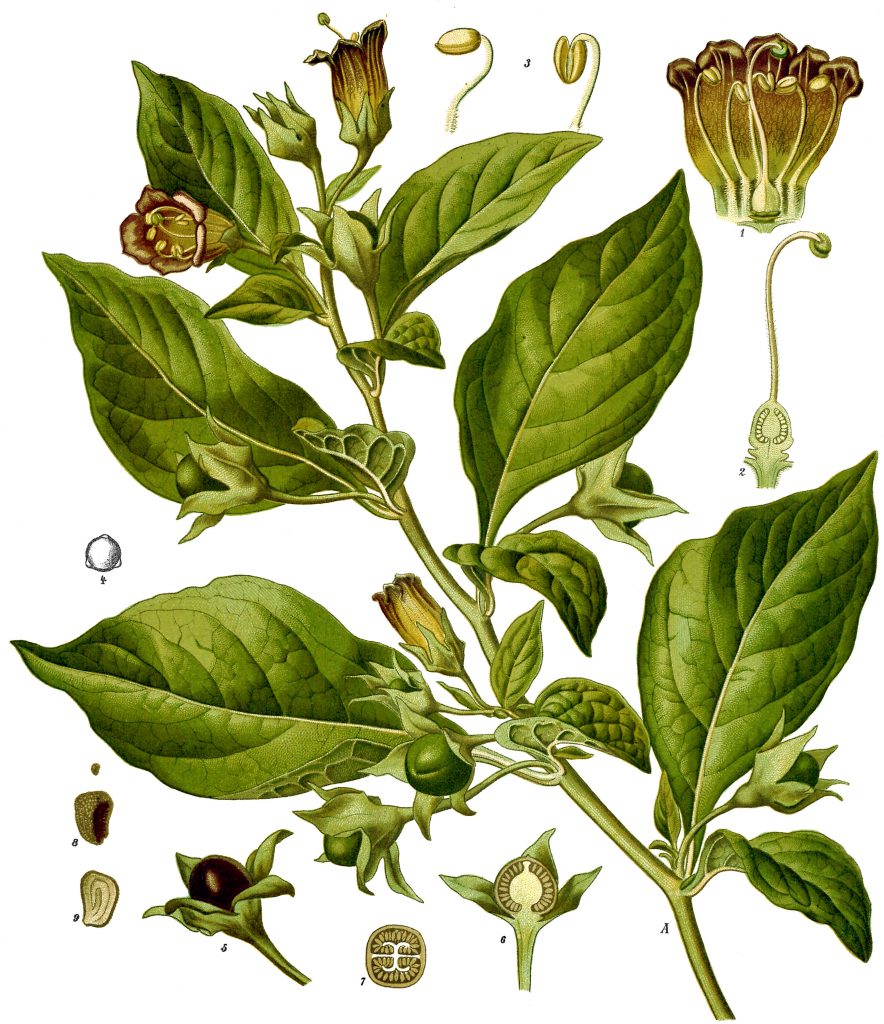
Commonly known as Deadly Nightshade. It is usually found in chalky soils, shaded areas and waste ground or old ruins. The name Belladonna, “Beautiful Lady”, is thought to derive from its use by Italian ladies, to dilate the pupil of the eye to make them more attractive. The generic name, “Atropa”, is derived from the Greek, Atropos, one of the fates that held the shears to cut the thread of human life. According to folklore it is a plant that belongs to the Devil.
The properties of Belladonna depend on the presence of Hyoseyamine and Atropine, the root is the principle source of preparing tinctures, however, the whole plant including the berries contain these alkaloids. Atropine, or Tropane is a highly toxic white crystalline alkaloid (C17H23NO3). In medicines, atropine is used to relieve spasms, to diminsh secretions, to dilate the pupil of the eye, and to relieve pain and inflammation. However, when a potion containing atropine is rubbed into the skin, it can produce life-like dreams, delusions, and high excitement. It has anti spasmodic activity and was used for asthma and whooping cough. In poisonous doses it causes paralysis, excitement and delirium.
Aconite
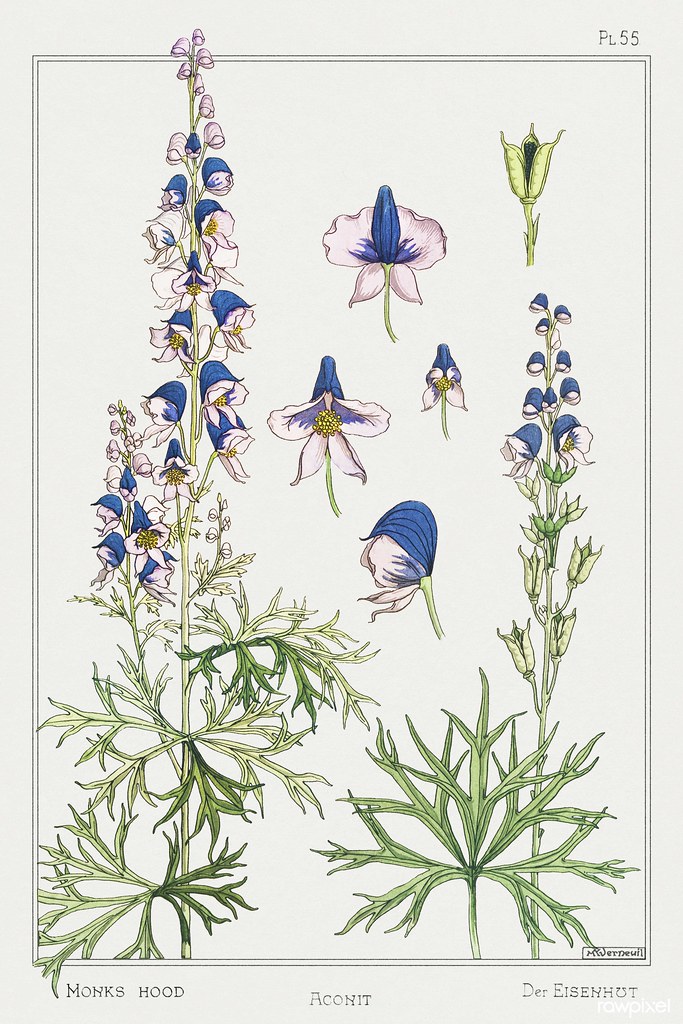
There are over 250 species of Aconitum, the most common of which are known as aconite, monkshood, or wolfsbane.
Aconitum species are highly toxic, although they were used in medicine as a pain-reliever, diuretic, heart sedative, and to induce sweating.
In medieval Europe, aconite was often used as a poison in animal bait or on arrows used when hunting wolves, hence the herb became known as wolfsbane. Frightened folks turned to growing wolfsbane for their protection, as superstitions said that werewolves could be repelled by the plant, or even tamed by it. Others, however, believed that having contact with wolfsbane on a full moon could actually cause shape-shifting.
Its medical uses was mainly restricted for the alleviation of muscular and rheumatic pain when applied externally to the affected area.
A number of alkaloids have been identified within aconite but the group which is believed responsible for its medical and poisonous activity are the Aconitines.
Aconite is extremely poisonous and the symptoms of poisoning begin with numbness in the mouth, crawling sensations on the skin, vomiting, stomach pains, laboured breathing, irregular and weak pulse, giddiness and staggering, eventual cardiac arrest or asphyxiation.
The mind remains clear : in cases of poisoning artificial respiration and stimulants are indicated.
Datura
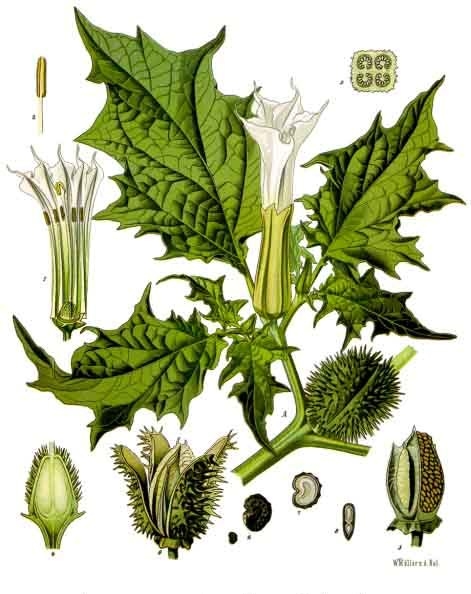
Commonly known as Thornapple or Jimson’s weed. Datura itself forms a genus of some 20 species of the nightshade family Solanaceae. The plants of the Solanaceae family have been used as hallucinogenics in both hemispheres of the planet. A Datura drug is generally made by dropping the pulverized seeds into a fermented drink or by steeping the leaves and twigs in water.Datura is strongly narcotic and doses lead to dilation of the pupils, giddiness, delirium and mania.
The active constituents are the same as Belladonna, i.e. hyoseyamine and atropine, but in smaller concentrations. Its medical uses are also the same as Belladonna, its effects on coughing and respiratory conditions being slightly stronger.
A Renaissance record indicates that these applications were applied to the armpits and delicate mucous membranes of the vagina with a broomstick or like-shaped implement. Andres Laguna (1499-1560), a physician to Pope Julius III, investigated these controversial religious practices and showed that the green ointments containing Datura took the women on “journeys” by producing dream-like states, rather than on physical flights as was widely believed. Existing evidence suggests that during the Spanish Inquisition, use of Datura could lead to persecution for witchcraft and sorcery.
Henbane
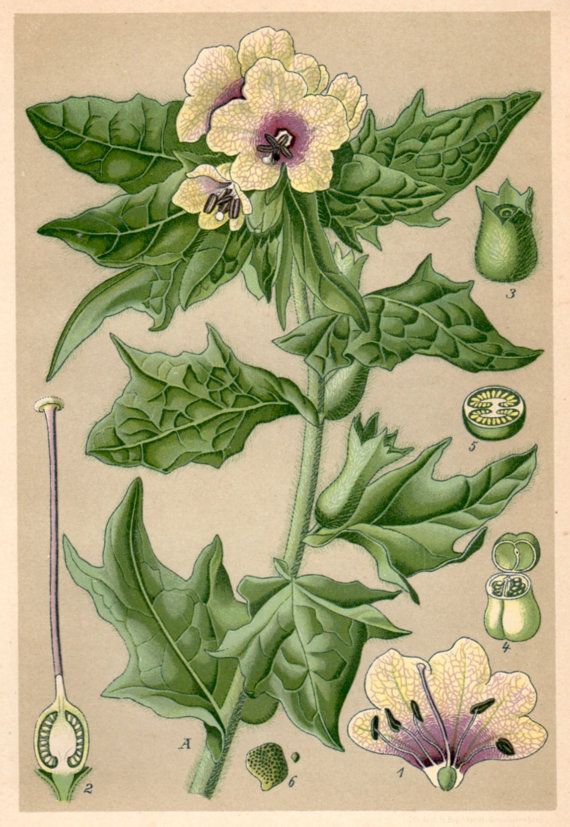
Hyoscyamus Niger is commonly known as Henbane. In Greek legend the dead in Hades were crowned with Henbane as they wandered beside the Styx.
The plant has been used since antiquity in magic and diabolism for its power of causing delirium and hallucinations.
In poisonous doses, poor vision, dizziness, sleepiness are often followed by delirium and convulsions. The active constituents are Hyoseyamine, Atropine and Hyoseine.
Similar to Belladonna in its medicinal uses, however the added presence of Hyoscine gives it the properties of reducing secretions and relax spasm of involuntary muscles.
It has been employed in hysteria, pain and rheumatism. It was also used extensively in insane asylums for treating mania and delirium tremens.
*
Foxglove
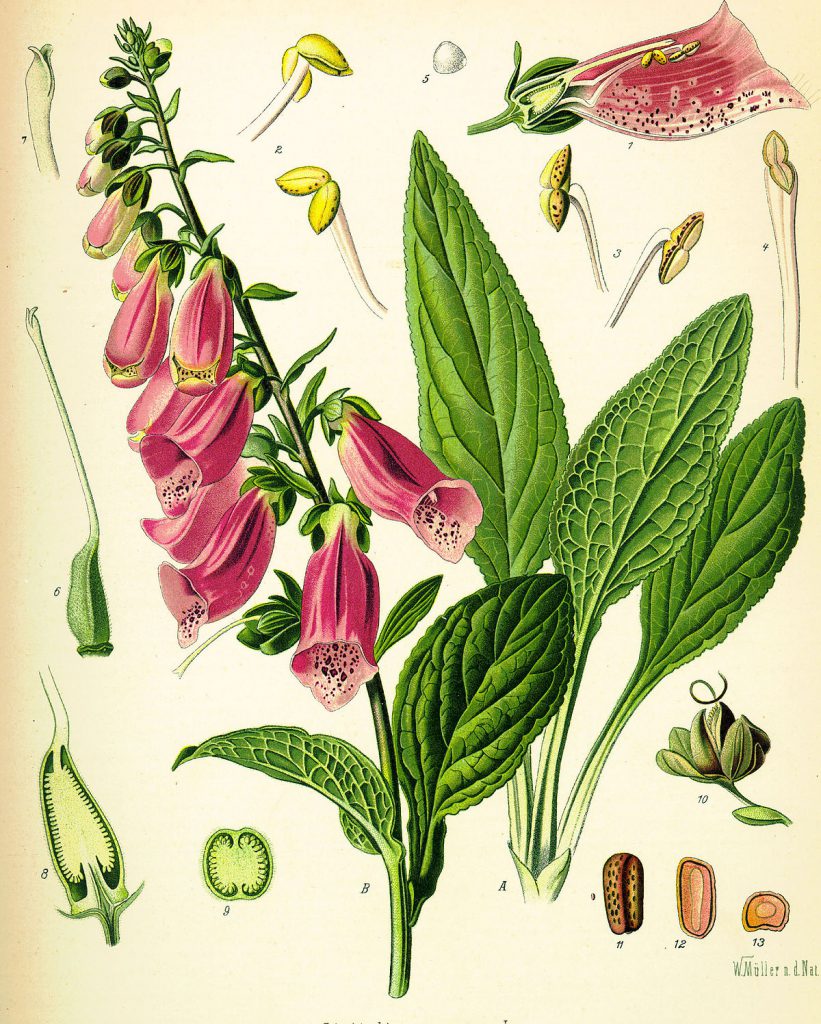
Commonly known as Foxglove. Digitalis contains a number of glucosides, three of which are cardiac stimulants: digitoxin, digitalin and digitalun. The other glucoside is digitonin, a cardiac depressant.
Digitalis has been used from early times for its properties on the heart and circulation. Its first action is to increase blood pressure due to contraction of the heart and arteries.
In toxic doses it causes disturbances of the senses, blurs the visual field. Low dose poisoning leads to slow and irregular pulse. Higher concentrations of poisoning leads to rapid heart beat and arrest.
An old saying about foxglove goes “It can raise the dead and it can kill the living”.
In Roman mythology, Flora showed Hera or Juno how to impregnate herself with no need of a man by touching a foxglove to her belly and her breasts. She either gave birth to Mars or Vulcan from this method, depending on the source.
Scandinavian legend says that the faeries taught foxes to ring foxglove bells to warn each other of approaching hunters.
In the 1700s, William Withering learned of this folk remedy from “an old woman in Shropshire” and studied it. This led to Digitalis being a very important plant-derived medicine for heart disease that is still in use to this day.
Woody Nightshade
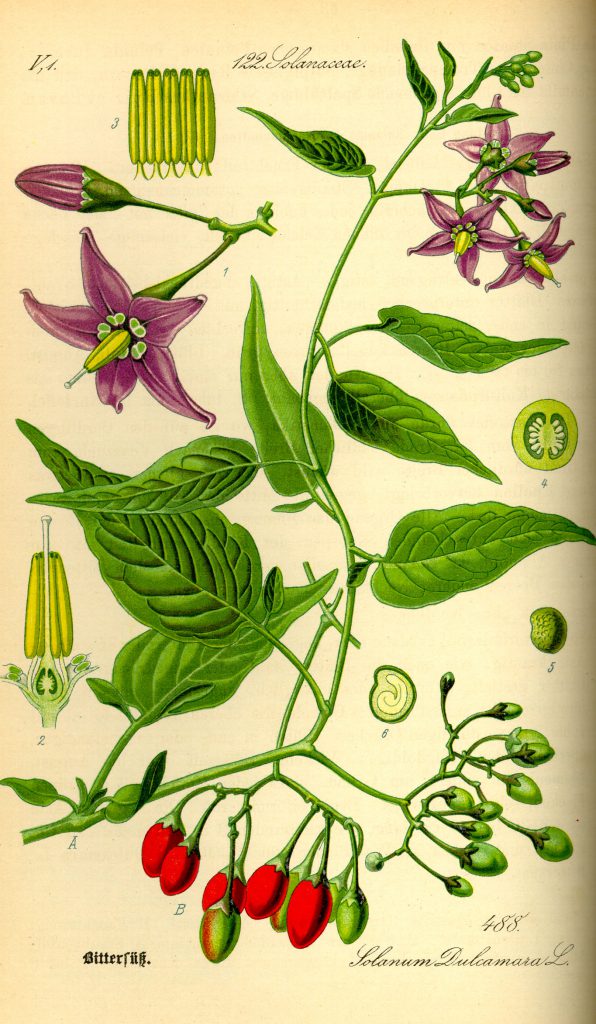
Commonly known as Woody Nightshade or Bittersweet. Its common name and the Latin “dulcamara” should be taken to mean “sweetbitter” as it comes from “dulcis” meaning “sweet” and “amarus” meaning bitter.
Solamum Dulcamara is usually found in hedgerows and shaded. Its active constituent are solanine (from unripe fruits), solasodine (from flowers) and beta-solamarine (roots). Solamine which acts narcotically and in large doses causes paralysis.
It slows the heart and respiration, reduces temperature and causes vertigo and delirium, eventually convulsions and death.
Woody Nightshade was used widely for a number of ailments including rheumatism, fever, inflammation and jaundice.
It was believed to guard against the evil eye and has been revered for thousands of years (a necklace of the berries was found in Tutenkahmun’s tomb).
*
*
*
Mandrake
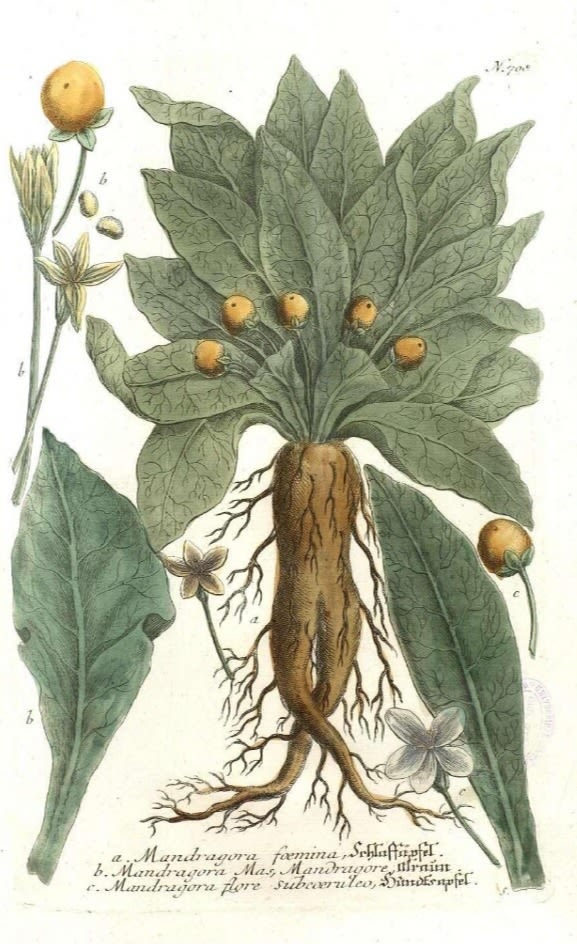
A mandrake is the root of a plant, historically derived either from plants of the genus Mandragora found in the Mediterranean region, or from other species, such as Bryonia alba, the English mandrake, which have similar properties. The plants from which the root is obtained are also called “mandrakes”. The English name of the plant derives from Latin mandragora through French main-de-gloire.
Mandrake contains the powerful tropane alkaloids scopolamine, hyoscyamine, atropine, and mandragorine, which have an intense affect on the central nervous system.
The root is hallucinogenic and narcotic. In sufficient quantities, it induces a state of unconsciousness and was used as an anaesthetic for surgery in ancient times. In the past, juice from the finely grated root was applied externally to relieve rheumatic pains. It was also used internally to treat melancholy, convulsions, and mania. When taken internally in large doses, however, it is said to excite delirium and madness.
As a plant with the shape of a human body, the mandrake was believed to exercise control over the body: it could induce love or conception, or bring good fortune, wealth and power. A mandrake root, shaped like a baby and slipped underneath one’s pillow every night, could help a woman conceive; or, shaped like a woman and carried in one’s pocket, could help a man secure his desired lover.
In the Middle Ages, it was believed mandrake could only be uprooted in moonlight by a dog attached to the base of the plant by a rope, otherwise a person would go insane from the plant’s screams.
Other witchcraft plants
Angelica root: Traditionally used in Chinese medicine for the blood, this herb is used in magic to build creative feminine energy. It is aromatic and can be used to flavor a drink.
Balm of Gilead Buds: The resin from these buds (extracted by letting them soak in olive oil for a couple of weeks) can be used in matters of necromancy, divination and concentration. In love spells, it does well to reunite separated lovers.
Bay leaves: This herb is a great multi-use ingredient to have around for spells. It can be stuffed under a pillow to help with dreams of a divinatory nature. Amulets or talismans made from the leaves offer protection. Under the waxing moon, the leaves can bear wish messages and be burned for them to come true. It is powerful in love spells, especially in attracting masculine energies.
Beth root: This herb was once used medicinally to treat problems with the female reproductive system. It can be used in magic to protect your home or family and is potent in love spells.
Blue Mallow Flowers: This herb was used in Mayday celebrations. In magic, it can be used in love and water spells. Putting it under a pillow can help with dream work and since this doesn’t have a scent won’t bother you to have so close to your head.
Cardamom: This herb is considered an aphrodisiac and is therefore great to use in spells pertaining to love or sexual.
Ginger: A whole dried root will protect from evil spirits, bad dreams, and hag-riding if kept under the pillow. Powdered Ginger sprinkled in the yard stops trouble. Add dried Ginger to love oils and powders to increase the heat of Passion.
Other resources and references:
- Castaneda, Carlos. The Teachings of Don Juan
- Grimassi, Raven. Grimoire of the Thorn-blooded Witch.
- Penczak, Christopher. The Plant Spirit Familiar.
- Pendell, Dale. Pharmako Gnosis: Plant Teachers and the Poison Path.
- Ratsch, Christian and Claudia Muller-Ebeling. Witchcraft Medicine.
- Ratsch, Christian. The Encyclopedia of Psychoactive Plants.
- Roth, Harold. Datura stramonium, Alchemy Works.
- Ward, Coby Michael. Devil’s Breath: A Trick of the Nightshades
- Ward, Coby Michael. Poisoner’s Apothecary on Tumblr

